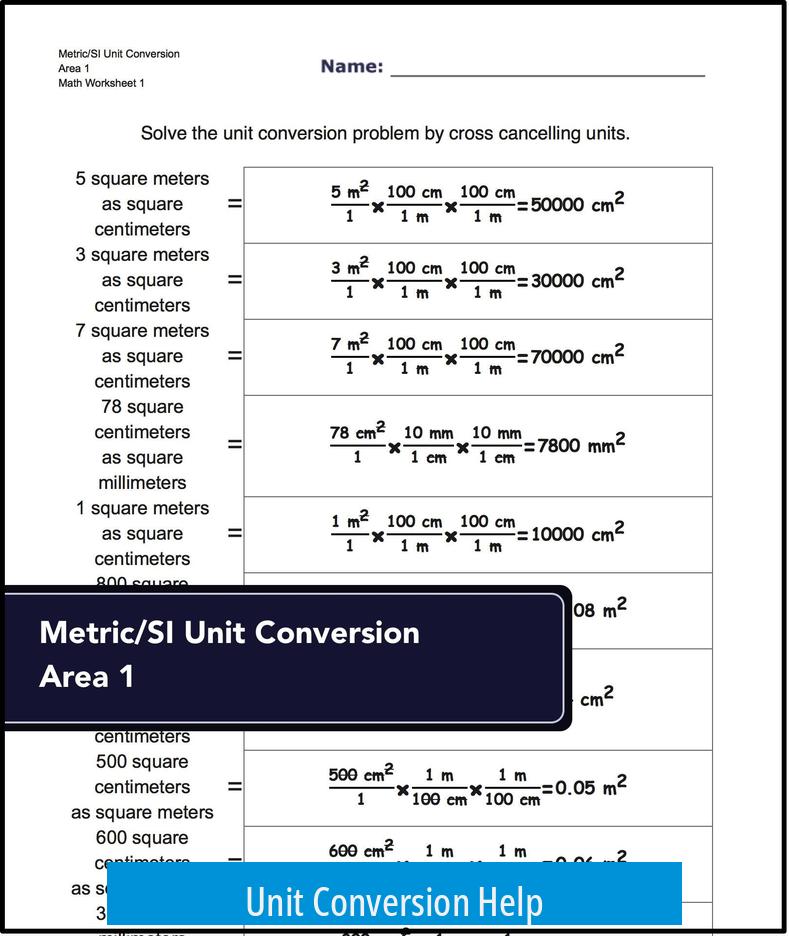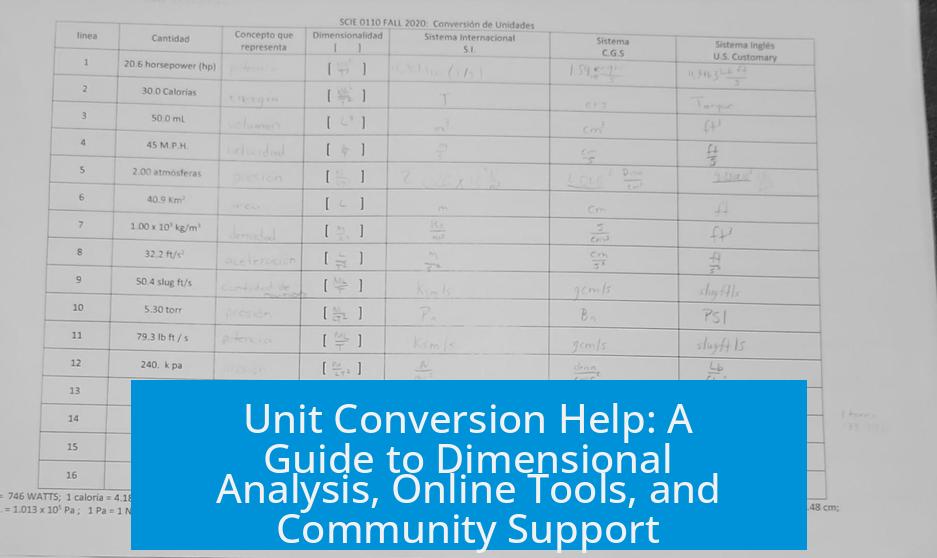Unit Conversion Help

Unit conversion involves changing a measurement from one unit to another while maintaining the quantity’s value. It relies on multiplication by conversion factors that relate units.
Dimensional Analysis
Dimensional analysis is a method used to convert units systematically. It organizes calculations to ensure units cancel properly. This approach helps avoid errors and keeps work clear, especially in complex problems. For detailed examples, resources such as this link provide easy explanations.
Step-by-Step Conversion Using Conversion Factors
Begin by identifying the conversion factors you need. For instance, to convert inches per millisecond (in/ms) to kilometers per hour (km/hr), determine km/in and ms/hr values.
- 1 inch = 2.54 × 10-5 kilometers
- 1 hour = 3.6 × 106 milliseconds
Use these factors in a multiplication chain, ensuring units cancel:
(0.460 in/ms) × (2.54 × 10-5 km/in) × (3.6 × 106 ms/hr)
Units in numerator and denominator cancel appropriately (in and ms), leaving km/hr as the final unit.
Using Online Tools for Accurate Conversions
Manual lookup of conversion factors can be time-consuming or confusing. Online calculators like Wolfram Alpha provide reliable conversion values quickly. Typing in “kilometer per inch” or “milliseconds per hour” yields precise factors used in calculations, improving accuracy and efficiency.
Related Concepts: Stoichiometry
Stoichiometry in chemistry applies a similar principle. It converts between moles, grams, atoms, and other units using conversion factors derived from chemical equations. For further understanding, see the stoichiometry overview.
Community Help
Forums like /r/chemhelp provide additional support for unit conversions and related chemistry problems.
Key Takeaways
- Unit conversion uses multiplication by conversion factors to maintain value.
- Dimensional analysis organizes unit cancellation and prevents mistakes.
- Identify accurate conversion factors through trusted sources or online tools.
- Apply the method step-wise to transform units cleanly and correctly.
- Online communities can offer further guidance and practice opportunities.
What is dimensional analysis in unit conversion?
Dimensional analysis helps organize conversions by canceling units step-by-step. It keeps math clear and ensures you end up with the right units.
How do I use conversion factors to change units?
Multiply your value by conversion factors that relate your starting units to desired units. Cancel out units carefully to get the correct final unit.
Where can I find reliable conversion factors online?
Tools like Wolfram Alpha provide accurate conversion factors quickly. Just type the units you need converted for instant results.
Can you give an example of converting complex units?
Yes. For example, convert inches per millisecond to kilometers per hour by multiplying with km/in and ms/hr factors and canceling out. Units cancel neatly to give km/hr.
Where can I ask for help if I’m stuck on unit conversions?
Visit communities like /r/chemhelp on Reddit for advice and detailed help with conversions and related problems.





Leave a Comment